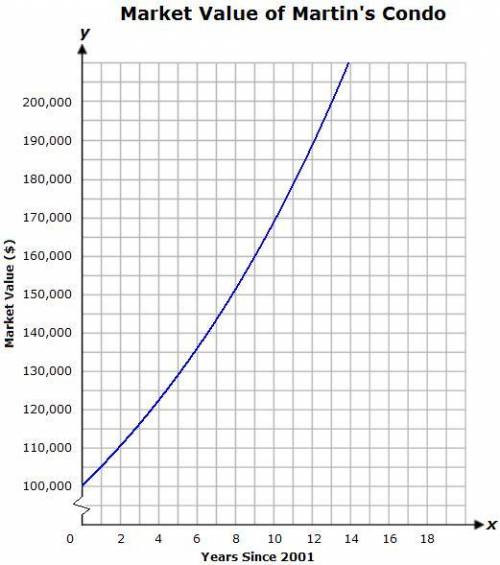
Mathematics, 03.05.2021 16:40 michelle230
20 points!
Martin purchased a condo below market value in 2001. He paid $92,500 for the condo even though the market value of the condo was much higher. In 2014, Martin transferred to another city for work and had to sell his condo. The market value of his condo increased over time, as shown in the graph below, where the y-axis represents the market value of the condo, in dollars, and the x-axis represents the number of years since 2001.
The initial market value of the condo is $(75,000; 92,500; 107,500; 100,000)
The percent increase per year of the market value of the condo is (95; 0.5; 50; 0.05; 0.95; 5)%.
The interval on which Martin owned the condo is (13; 0; 2001; 14; 1; 2014)≤ x ≤ (13; 0; 2001; 14; 1; 2014)


Answers: 2


Another question on Mathematics


Mathematics, 21.06.2019 21:00
Isabel graphed the following system of equations. 2x – y = 6 y = -3x + 4 she came up with the solution (2,-2). what were the 3 steps she did to get that solution? (make sure they are in the correct order)
Answers: 2

Mathematics, 21.06.2019 22:00
You can ride your bike around your block 6 times and the whole neighborhood 5 times in 16 minutes. you can ride your bike around your block 3 times and the whole neighborhood 10 times in 23 minutes. how long does it take you to ride around the neighborhood?
Answers: 2

Mathematics, 21.06.2019 22:30
The area of the map is the product of the length and width. write and expression for the area as the product of the two binomials do not multiply
Answers: 2
You know the right answer?
20 points!
Martin purchased a condo below market value in 2001. He paid $92,500 for the condo even...
Questions












Computers and Technology, 29.06.2019 01:00


Computers and Technology, 29.06.2019 01:00








